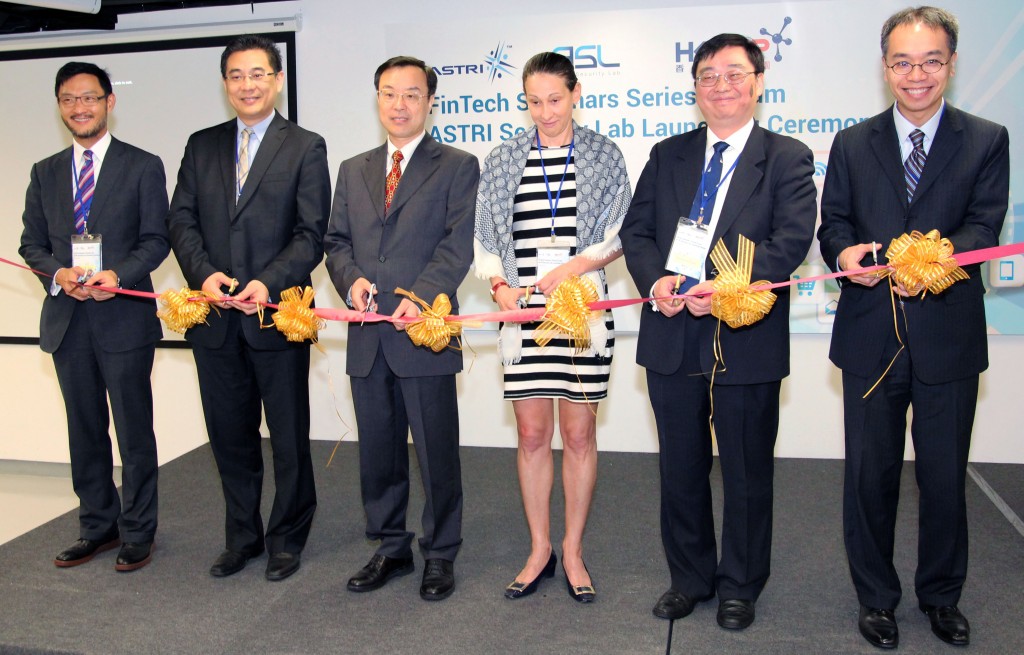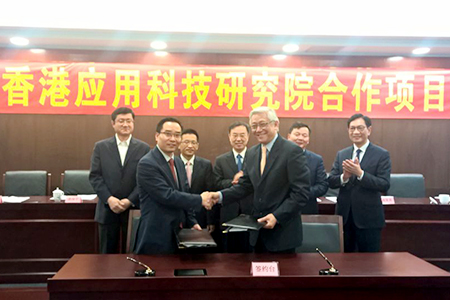[Hong Kong, 5 May 2015] Hong Kong Applied Science and Technology Research Institute (ASTRI) hosted FinTech Seminars Series (2) cum ASTRI Security Lab Launching Ceremony today (5 May) at InnoCentre to introduce ASTRI’s new cyber-security platform and to invite the finance industry to join its FinTech alliance against cyber attacks.
The ASTRI Security Lab (ASL) is ASTRI’s targeted R&D and knowledge-sharing lab with a world-class R&D team committed to cyber-security through investigations and knowledge exchange to build effective solutions against cyber attacks. ASTRI invites the finance industry, which is Hong Kong’s major economic pillar, to join the Lab as a strong FinTech alliance to defend against cyber threat. Providing high-level and impartial cyber-security services to financial institutions, finance-related government agencies and FinTech entrepreneurs, ASTRI aims to be their preferred consultant and independent cyber-security assessment agency while nurturing information security experts for FinTech.
ASTRI is pleased to have invited Mr Esmond Lee, Executive Director, Financial Infrastructure Department of Hong Kong Monetary Authority as Guest of Honor at the Launching Ceremony. He said, “Innovative payment services – one of the key elements of FinTech – have been a focus of the Hong Kong Monetary Authority in recent years. We will keep up with our efforts in developing the hard and soft infrastructures necessary for their healthy development in Hong Kong.”
Mr Johann C Y Wong, Deputy Commissioner of The Innovation and Technology Commission also addressed the audience at the Ceremony, “Every day we hear about computers and accounts being hacked. It is crucial that we have a concerted effort in research, information sharing, and finding the means to deal with all these threats. I am glad that ASTRI has taken this very important step forward on cyber-security.”
The importance of cyber-security was reiterated by Mr Wong Ming-yam, Chairman of the Board, ASTRI. “Security is a key concern for all money- related transactions on-line. Hong Kong needs to be a ‘fort’ when it comes to cyber-security”, he stated.
After the Launching Ceremony, ASTRI leveraged the success of the inaugural series in March to host FinTech Seminar Series (2). Ms Melissa C Guzy, Managing Director of Arbor Ventures and Mr Alex T W Leung, Director of Information Security of ASTRI elaborated on the urgency of cyber-security with talks on FinTech Industry Investment Landscape and Fintech’s Worst Nightmare Only a Few Clicks Away: N Ways in Cyber-security to Hack Your Corporate Information respectively to a large audience comprised of finance and IT experts.
Cyber-security is increasingly becoming one of the world’s top security issues, with over 80 million security events being reported annually across the globe. With the use of mobile and other novel devices, heightened cyber attacks on the digital infrastructure of financial institutions could cause huge loss to the entire society. ASTRI Security Lab features SecShare, a smart and secure proprietary cyber-security information sharing platform. Closely connected with academia and international experts and having HSBC and Bank of China as advisors, ASTRI as a neutral body is uniquely positioned to meet the crucial yet formerly unaddressed need in Hong Kong’s FinTech to enhance cyber-security.


